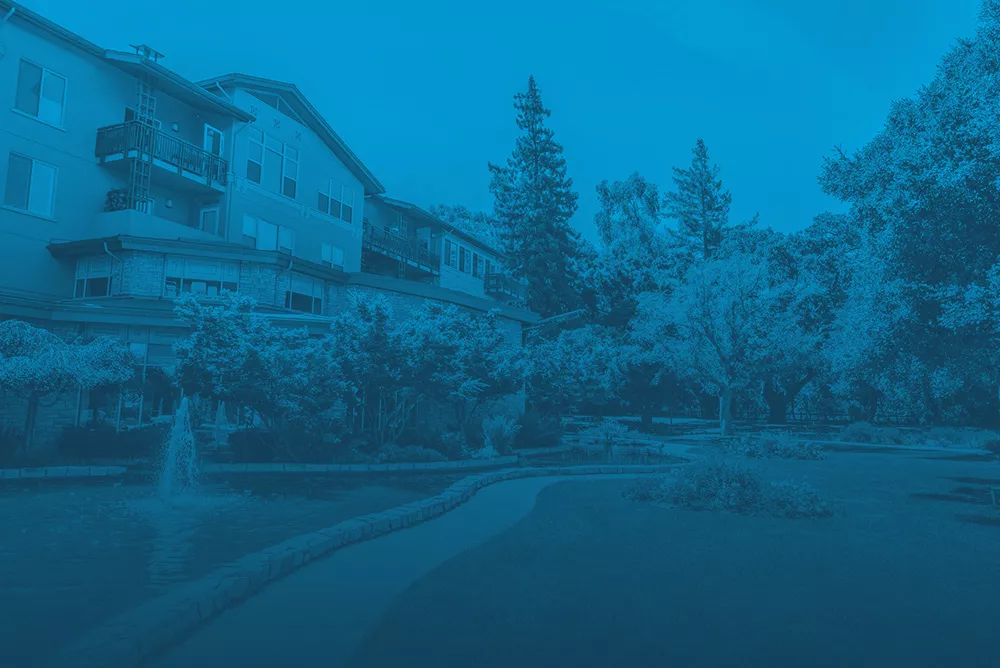The aging-in-place movement has been touted as an effective strategy to keep folks in their homes, either delaying or avoiding altogether the need to enter senior-oriented housing, and this trend could potentially have chain-reaction implications for senior living communities’ business models and marketing strategies.
Greater numbers of people choosing to age in place could mean communities will lose appeal to younger, healthier prospective residents, forcing them into a growing reliance on older, frailer residents in order to maintain occupancy, suggests a recent white paper released by Point Forward Solutions, LLC, a strategic consulting and financial advisory firm dedicated to the field of seniors housing.
Combining these two phenomena results in an increased average age and acuity of community residents. This, in turn, could lead to higher resident turnover, and thus a diminishing customer value proposition, which then impacts the effectiveness of sales and marketing.
Older Residents + Higher Acuity = Shorter Length of Stay
“As a community ages and acuity rises, it can become less attractive to younger, healthier prospective residents,” says Ryan Frederick, founder of Point Forward Solutions, in his white paper. “If attracting younger, healthier older adults is increasingly difficult, then new residents are more likely to be older and frailer. As such, communities are relying more heavily on their ability to attract older, frailer residents to maintain occupancy.”
Brookdale Senior Living (NYSE:BKD), the largest operator of seniors housing, said in its investor report last November that just over half of its independent living residents use a cane or walker. The average age and acuity levels of those in independent living has continued to rise, according to Margaret Wylde, the president and CEO of ProMatura, a market research company based in Oxford, Miss. and London, UK.
The average age of those living in independent living has shifted a few years older to the mid-80s, she says, with the average age of assisted living residents in the late 80s to early 90s.
It could be challenging to reverse these trends and attract younger residents, says Frederick, especially if an independent living community reaches a “tipping point” where the community feels more like a “senior home” than an active older adult environment.
With older seniors comes a higher turnover rate, as higher acuity residents are less likely to live as long as younger, healthier residents, Frederick continues.
Needs vs. Lifestyle Decisions Shrinks Prospective Resident Market
And if newer residents continue to be older and frailer, the effective market size for these residents, he says, is smaller on a relative basis. That’s because older prospective residents represent a “smaller pool of age and income qualified people” compared to younger prospects, and frailer residents are more likely to move into a senior living community due to “current or anticipated health needs than by the attraction of a care-free lifestyle.”
“We can anticipate, therefore, that such prospective residents are less likely to move great distances if there are viable care options close to them,” says Frederick. “The impact is that the geographic radius of people to market to decreases.”
How Does This Affect a Community’s Marketing Strategies?
With all this in mind, Frederick presents what he calls an “exercise using hypothetical numbers that attempts to approximate the combined impact of greater resident turnover and smaller addressable market.”
This exercise assumes that communities that experience aging in place have approximately (1) half the length of stay for its residents and (2) reach half the geographic distance from the community as before. Additionally, they’re catering to a much different age bracket—80 to 89, versus 75 to 84.
The combined effect of higher turnover plus a smaller market, Frederick finds, is that communities may require more than ten times the productivity in sales and marketing in order to maintain occupancy.
Traditional sales and marketing approaches aren’t well-suited to recent and current economic conditions, he says, which have left many older adults (and their children who may be offering financial support) less prepared for their futures.
In response, marketing strategies must focus on building trust with potential residents and their families, says Frederick, and should invest a lot of time into developing leads.
Still further, communities may need to change the way the pitch their services. While independent living marketing used to focus on an “improved and care-free lifestyle,” says Frederick, with an incoming population that’s older and frailer, communities may need to start presenting a value proposition oriented around the ability to deliver health care.
Possible Solutions
When addressing problems that could arise from aging in place, senior living providers will need to come up with some creative solutions, says Frederick in his white paper.
Creating a plan for a “successful, durable strategy for aging in place” can include conducting a community assessment, creating a level of urgency to deal with current challenges and opportunities, and testing/implementing solutions, all of which Frederick elaborates on in his white paper.
“Neither denial of today’s market realities nor abrupt and dramatic change is a wise course of action,” he says. “Instead, leaders should follow a well reasoned and carefully calibrated strategy. Such an approach should rely on using small bets to test hypotheses before moving more confidently to bold initiatives.”
Written by Alyssa Gerace
CCRC Contracts Must Provide Incentive to Younger Residents

